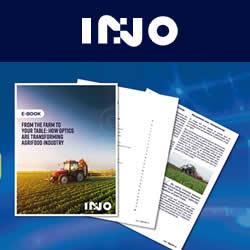How are Farms Evolving to Better the Environment?
National Corn Growers Associations' Female Farmers Discuss Sustainability, Innovative Techniques, and the Challenge of Growing Crops Near Urban Communities and Waterways
With Earth Day approaching on April 22nd, its time to talk about the environment. Today, more than any other period in history, Americans are vocally concerned about the environment, particularly coastal waters and bays along the East Coast. Consumers have also increased demand for foods that are produced in environmentally sustainable ways. But, what exactly does that mean? Recently, five CommonGround farm women teamed up with the National Corn Growers Association and YourUpdateTV to discuss sustainability and how corn farmers are creating a better future for our communities and our environment.
A video accompanying this announcement is available at: https://youtu.be/GSZup4gGB5A
Sustainability has garnered a lot of attention in recent years, but farmers have long been acting as stewards of the land, passing that legacy down from generation to generation. Thats because, as our world population continues to rise, farmers have to learn to grow more food with less water, energy and other resources. It is the way farmers work to preserve and protect the resources that provide the livelihood of their family businesses - the air, soil, water and habitat on their farms and in their communities.
Farmers remain committed to meeting sustainability challenges through careful stewardship of the land, constant improvements in technology and advanced production methods. For example, many farmers perform crop rotation, the practice of planting different crops in a planned sequence in each field. Among other benefits, this improves soil health and helps to control weeds and pests, reducing farmers needs for herbicides, pesticides and fertilizers.
Terraces and reduced tillage help farmers reduce soil erosion and runoff, and keep water in the soil for plants to use. Farmers even participate in conservation programs that remove environmentally sensitive land from agriculture production to improve water quality, prevent soil erosion and reduce loss of wildlife habitat.
For more information, visit NCGA.com
About the National Corn Growers Association:
Founded in 1957, the National Corn Growers Association represents more than 40,000 dues-paying corn farmers nationwide and the interests of more than 300,000 growers who contribute through corn checkoff programs in their states. NCGA and its 49 affiliated state organizations work together to create and increase opportunities for corn growers.
About CommonGround:
CommonGround is all about starting a conversation between women who grow food, and people who buy it. Its a conversation based on the volunteers personal experience as a farmer, but also on science and research. Our first goal is to help consumers understand that their food is not grown by a factory; its grown by people. We aim to clear up confusion about how food is grown or raised so that consumers can understand and trust the people and the process behind their food.
About YourUpdateTV:
YourUpdateTV is a social media video portal for organizations to share their content, produced by award-winning video communications firm, D S Simon Media (http://www.dssimon.com). It includes separate channels for Health and Wellness, Lifestyle, Media and Entertainment, Money and Finance, Social Responsibility, Sports and Technology.
Featured Product

